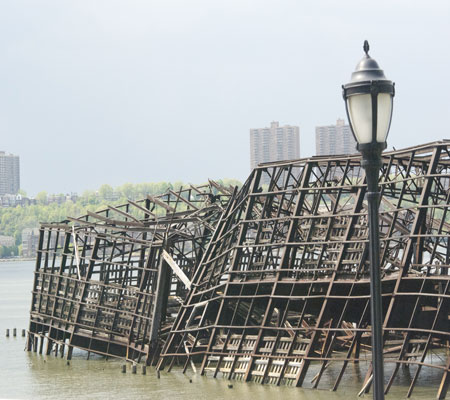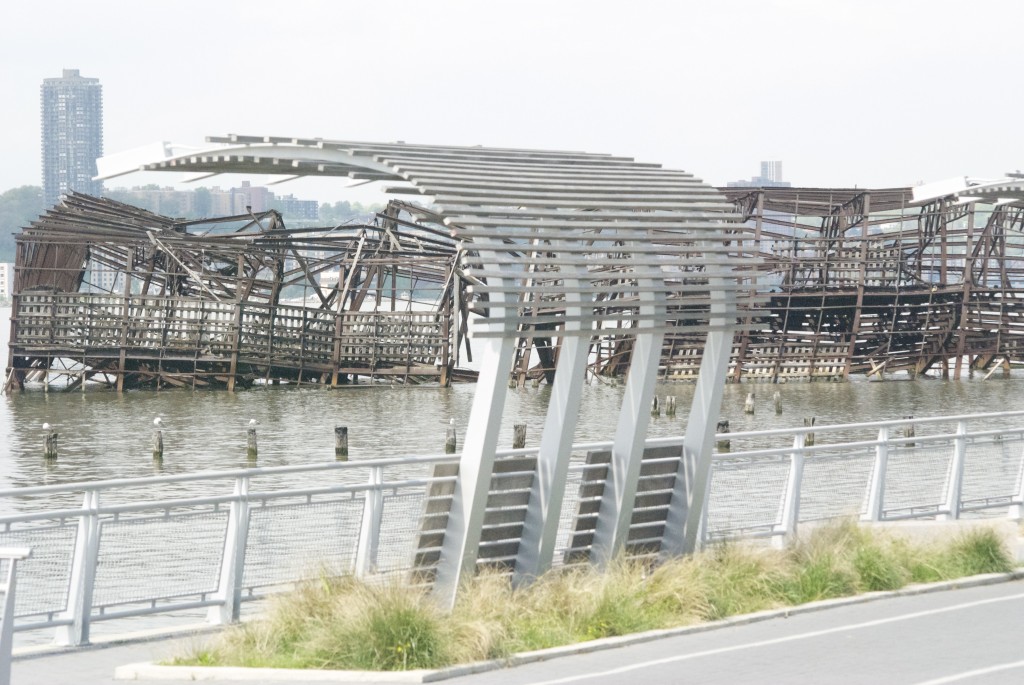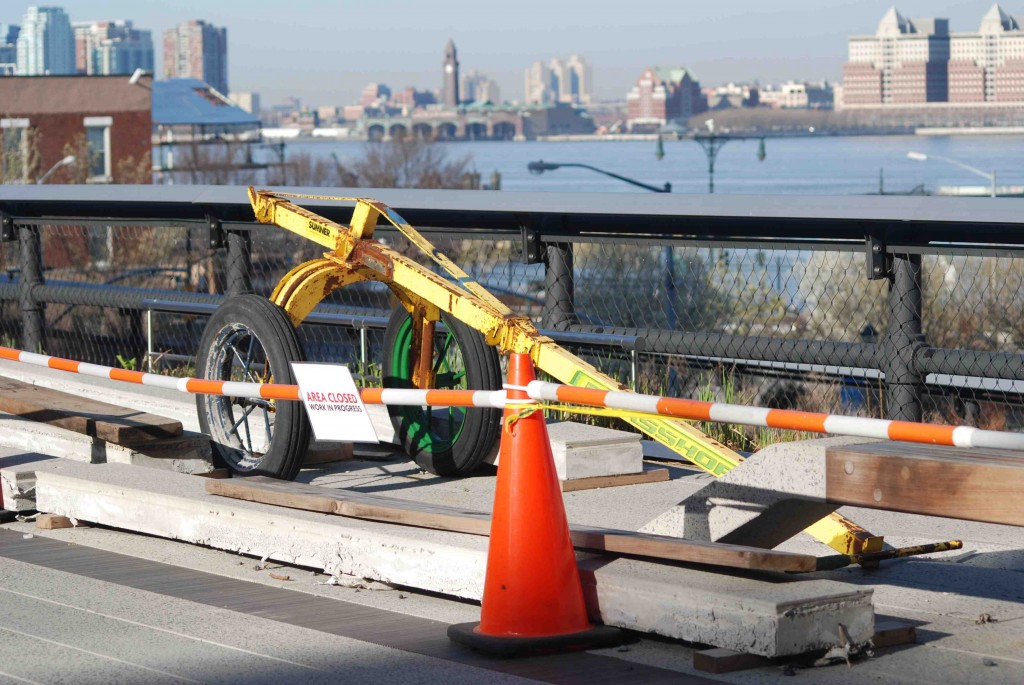Watching and studying a great public space in progress has made me think a lot about the decisions that designers and architects make as they create the places that we will all inhabit and enjoy.
Every weekend I drive down the West Side Highway on my way home from upstate, and it’s hard not to notice (because we’re almost always stuck in traffic) the new park that snakes its way up the bank of the Hudson River in the 60s.
What you see very dramatically from the highway (and a bit less so from the walkway inside the park) is the way the ancient river structures have been echoed in the modern architecture. (Okay, “ancient” is a bit over-the-top, since these structures aren’t much more than 100 years old, but in the age of Twitter I’m going to let it stand, just this once.)
Look at the twisted wreck of Pier D….
This pier was originally built of wood in the 1880s and was angled in a particular way to enable rail cars to roll down and unload cargo from ships. It was destroyed by a fire in 1922, rebuilt with steel and then finally destroyed for good — by another fire — in 1971.
The designer who planned this section of the park along the West Side Highway (it’s at around 64th Street) paid wonderful homage to Pier D and the longshoreman who worked it by creating the benches you see here…
It’s just a suggestion, nothing heavy-handed, but it connects a passerby to the old days when this pier was a vital commercial link, providing a way for grain, milk, vegetables, and other supplies to reach the city. (Not unlike the High Line, by the way; follow some of the links in my blogroll to learn more about the history and purpose of the original railroad.)
 Even the small, incidental seats that line a cement wall and are clearly intended for unceremonious sitting — tying your shoe, tightening the straps on your roller blades, enjoying a quick smoke — echo the twisted wreck of Pier D.
Even the small, incidental seats that line a cement wall and are clearly intended for unceremonious sitting — tying your shoe, tightening the straps on your roller blades, enjoying a quick smoke — echo the twisted wreck of Pier D.
There’s a story in the Times about how Adrian Benepe, the parks commissioner in 2003, had to race down to the waterfront to stop a crane from dismantling the pier, which he had committed to preserving. We all owe this man a debt of gratitude, as well as the designers and architects who crafted so many decisions as they were conceiving this park. They are a source of pure delight to the eye and the spirit, whether you’re strolling along on a beautiful spring day or stuck in a traffic jam on the highway above.












